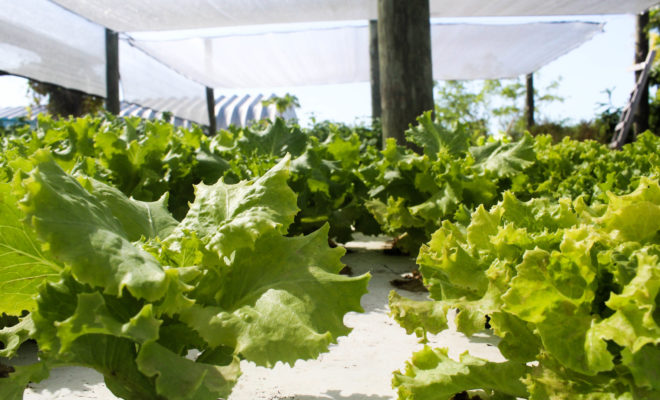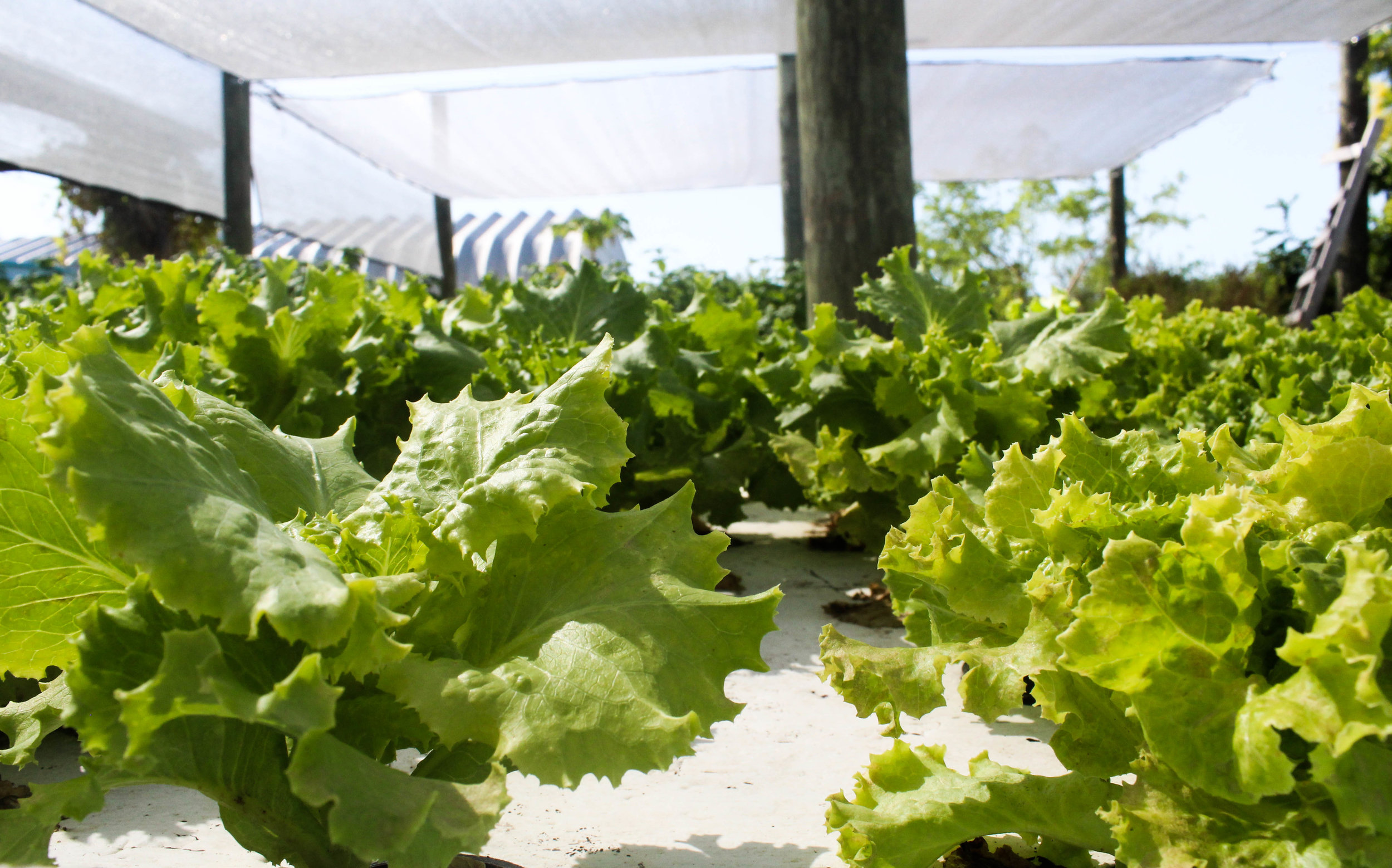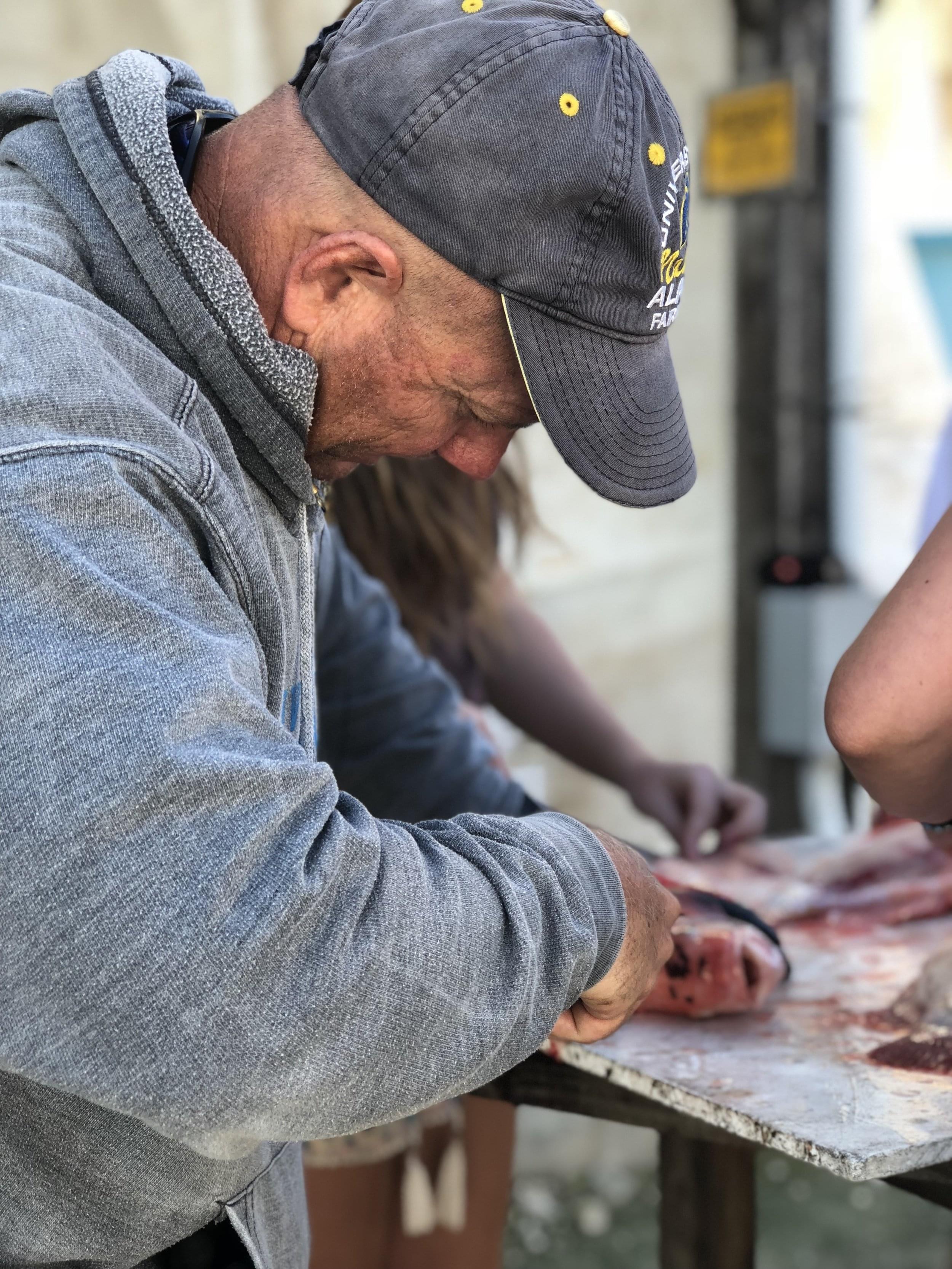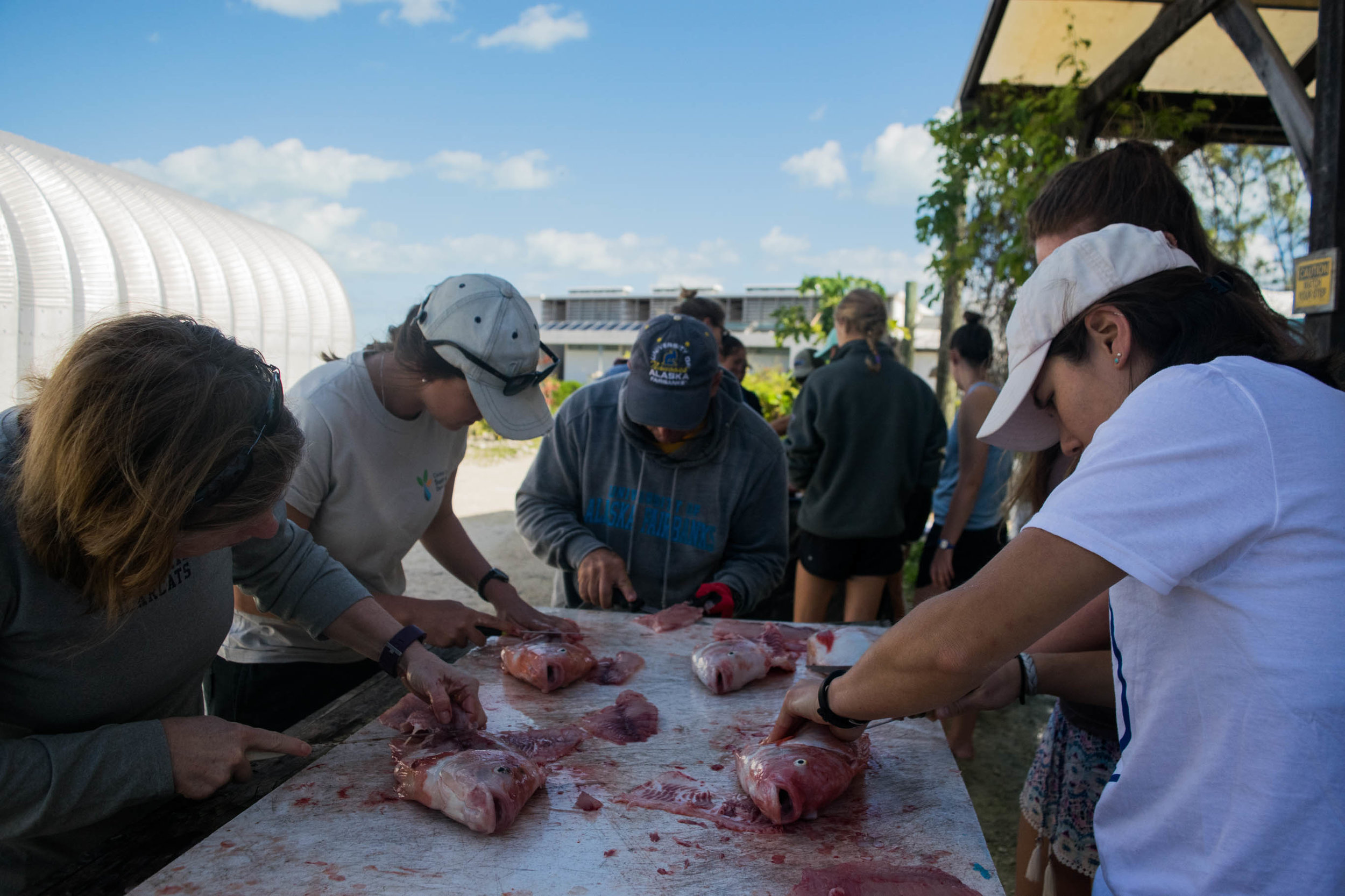Our aquaponics system is a huge part of the many things we do around here at the Center for Sustainable Development (CSD). Aquaponics helps us produce our own food quickly and sustainably by using the nutrient-rich waste produced by tilapia fish to fertilize all of our growing vegetation. Any fresh water fish can be used for an aquaponics system, even goldfish! We use tilapia because they are extremely resilient. Although we keep our water system very clean, tilapia can survive in low dissolved oxygen levels, poor water quality and within a water temperature range of 10-15° C. Aquaponics helps us significantly offset our campus food mileage. With one system, two high-valuable co-products are produced; tilapia and leafy greens are delivered fresh to the dining hall for campus to enjoy.
Another benefit of raising tilapia is that the fish themselves function as a sustainable, valuable, and healthy protein source in our dining hall. A lot less water is used to raise tilapia than is used to raise farm animals, making tilapia a more viable food option than, for example, beef. Additionally, tilapia is rich with nutrients including selenium, vitamin B-12 and Omega-3.
Currently, we have four tanks to raise our tilapia in staggered production, not including the tanks used for fingerlings (the young tilapia). Once the tilapia are mature, we harvest them for a meal. We harvest tilapia about every 6 weeks, but as we continue to explore the best way to maximise efficiency in our current system, we hope to have tilapia once a week (to feed about 150 people) on our campus menu. Ultimately, we hope to expand our system to be able to produce enough tilapia to provide two meals per week. As we experiment with adding Giant Freshwater Shrimp to our aquaponics system, we introduce the possibility of producing a third protein-rich meal per week. At our most recent tilapia harvesting we had over 70 tilapia to fillet; luckily for Team CSD, our extended Cape Eleuthera Island School family came to help out!


.jpg)



